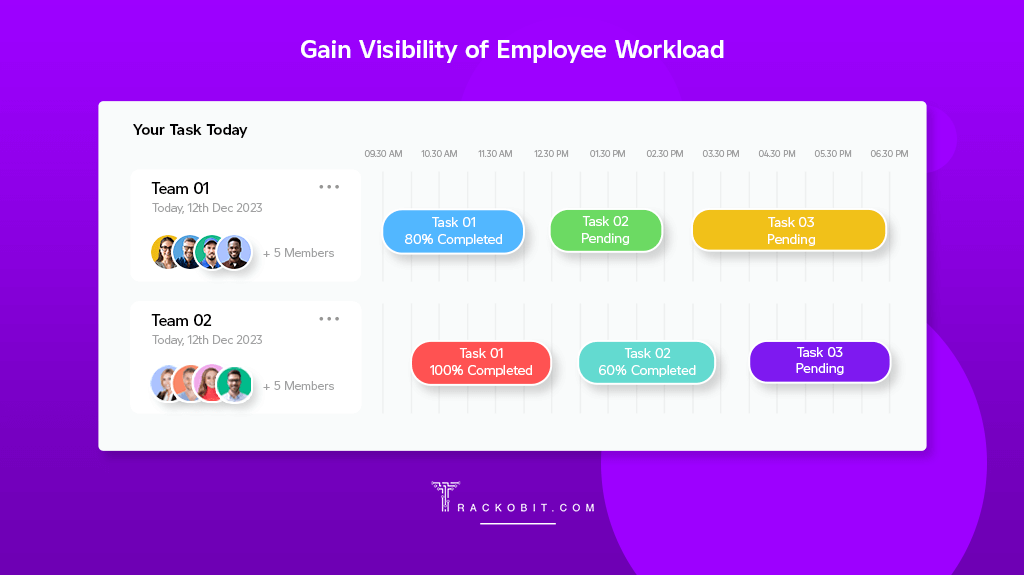-
TrackoBit
Manage commercial vehicles with the new-age Fleet Management Software
TrackoBit -
TrackoField
Streamline your scattered workforce with Field Force Management Software
TrackoField -
Features Resources
-
Blog
Carefully curated articles to update you on industrial trends. -
White Paper
Insightful papers and analysis on essential subject matters. -
Glossary
Explore an alphabetical list of relevant industry terms. -
What’s New
Get TrackoBit & TrackoField monthly updates here. -
Case Study
Explore the cases we solved with our diverse solutions. -
Comparisons
Compare platforms, features, and pricing to find your best fit.
-
About Us
Get to know TrackoBit: our team, ethos, values, and vision. -
Careers
Join the most dynamic cult of coders, creatives and changemakers. -
Tech Support
Learn about our technical support team and services in detail. -
Events
Check out the exhibitions where we left our marks and conquered. -
Contact Us
Connect with us and let us know how we can be of service.
How to Manage Employee Workload?
- Author:Tithi Agarwal
- Read Time:10 min
- Published:
- Last Update: December 28, 2023
Table of Contents
Toggle
Here are the 10 best ways of managing employee workload to encourage productivity, high-quality outcomes and results while providing a stress-free environment.
Table of Contents
Toggle
Poor workload management can seriously impact your project and business’s success. First of all, it can lead to frequent burnout among employees, which lowers output, produces low quality work, and increases turnover. Additionally, it may result in inefficient use of resources, which, over time, may have an impact on your profitability.
So if you are wondering and looking for ways to manage employee workload effectively and keep the negative outcomes at bay, then you are at the right place.
In this article, we have discussed ten ways that are definitely going to help you manage your workload. And do not forget to read the tips and secrets spilled throughout to help you keep your workforce productive and stress-free.
What is Workload Management?
Workload management is the process of allocating tasks to employees or teams in a way that the load is distributed as evenly as possible among the available resources.
It takes into account the skill sets, availability, capacity, and any other factors that may have an impact on the quantity and type of work that each team member should receive.
Workload-management-savvy managers or team leaders, create effective project schedules that keep everyone on the team productive and engaged without being overworked or idle.
Why is this relevant? Because resource optimisation is critical to the success of your organisation. Nobody wants to be in the opposite circumstance, where some project team members are idle, and others are overworked to the point of burnout.
10 Effective Ways to Manage Employee Workload
As a manager, if you often deal with problems such as delayed projects and high employee burnout, here are 10 employee workload management practices to pull you out of the predicament.:
1. Throw the Idea of Multitasking Out of the Window
Unless your employees are exceptionally well-organized, you should advise them against multitasking. Multitasking has long been promoted and encouraged in the corporate world. But if you want your work to be done right in one go, and in a timely manner, multitasking isn’t the best resort. Because it’s detrimental to employee productivity.
Employees who work on several tasks at once aren’t doing any justice. Imagine it as someone riding a motorbike and simultaneously sending a text — isn’t this scary? Similarly, you shouldn’t expect your employees to handle multiple significant tasks simultaneously.
2. Prioritise, Prioritise, Prioritise
When every task is urgent task, teams can feel overwhelmed. From an individual team member’s perspective, having an ordered task list gives them a starting point for their work. Once one task is finished, they know what to focus on next – this also reduces downtime between different pieces of work.
If their to-do list isn’t prioritised, they may spend unproductive time figuring out where to start or what to do next. Not only that, but a long list of tasks just feels overwhelming.
3. Determine your Team’s Capacity
Determining the team’s work capacity is the next step in the work allocation process. This entails assessing the group both individually and collectively. Each team member has special abilities and skills, better suited for certain kinds of tasks.
To maximise productivity and enhance outcomes, while assigning the tasks, try to match those tasks with employees’ interests or skills. If a group or person appears to be overburdened, consider assigning work to other teams or external resources.
4. Rely on Automation
Employees’ schedules can be more efficiently planned when they use software to handle some of their laborious tasks. For example, the processing of payments and salaries can be very time-consuming. Payroll automation free up HR employees from tedious, challenging tasks and lower the risk of errors.
Similarly, certain administrative tasks, such as form filling and filing manually, can get too much, but not with automation. Automation allows you to reclaim time that could be better spent on staff training or creating a more welcoming and productive work environment, thus enhancing employee satisfaction. Automation through software reduces operating costs, boosts ROI and improves outcome consistency.
5. Use Time and Task Tracking Tools
Employee workload management requires constant awareness, which can be easier said than done. There are high chances of circumstances going astray.
- Tasks may take longer than estimated
- You could be relying on other work that gets delayed
- Staff members could fall ill
- An unexpected ad hoc project could crop up
To manage such a situation effectively and to have a clear understanding of the project status, it’s best to adopt task management software like TrackoField. Such software helps managers gain the vital status of the tasks and project timelines in real time.
It helps with
- allocating tasks,
- Automates check-in for updates
By tracking employees’ real-time capacity, you will be able to re-prioritise another task that gives employees more availability later on.
Task and time tracking brings in visibility, and helps you visualise workload. It allows you to view the workload in calendar form and view the start and end date and time of each task and employee.
Bonus tips: Software such as TrackoField offers target assigned vs achieved reports and many other analytical reports. They are auto-generated and contain real-time data related to tasks and employee performance. They are a great way for project managers or leaders to measure each employee’s performance quality, productivity skill set and workload.

6. Have Regular Check-ins with Employees
Another effective way to handle employee workload and detect over or under-skill utilisation is to have 1:1 meetings with each member of the team. This could very well be part of the regular team meetings, though it is ideal to have such meetings personally or face-to-face.
Employee workload is a real concern for project managers and leaders; team members should know this. Frequent check-ins convey these messages and allow employees to voice any worries they may have about their workload.
Pro tip: Don’t assume that your teams will voluntarily provide this information, particularly if openness and transparency are not hallmarks of your organisation’s culture. Ask team members about their workload proactively and straightforwardly, and let them know you’re prepared for candid criticism.
7. Set Achievable Deadlines
Imposing unreasonable deadlines can derail a project and lower team morale. Remember that team members can, in fact, become unproductive due to stress and cause other team members to lag behind.
So, what is the key to choosing the right deadline for a task?
To set a reasonable deadline, utilise your team’s capability and the collective understanding of time estimates. Know how long a given task takes and how productive the employee or employees working on it are.
Moreover, your staff won’t frequently need to work long hours when dealing with realistic deadlines. They won’t be subjected to excessive pressure and are more likely to generate excellent work.
8. Distribute Project Tasks Evenly
Large teams can occasionally result in an uneven workload distribution, particularly when proper planning is lacking.
In severe circumstances, some staff members might be overworked, and others might have to skip the project. The level of work satisfaction on your team may suffer greatly as a result of this uneven workload.
Supervisors should make sure that tasks are distributed equitably and evenly, taking into account various factors such as:
- Project specifications.
- Experience and skill set of the employee.
- Whereabouts and availability of the employee.
- Requests from clients, etc.
9. Don’t let Work-Life be a Myth
Proper employee workload management workload should involve discussing work-life balance. One of the best methods to keep team members from feeling overburdened is to accomplish this.
You can encourage employees to
- Take regular breaks during the working day.
- Take their annual leave regularly throughout the year.
- When feasible, work flexibly.
- Leave the office at a decent hour.
- Remember that “overtime” does not mean “all the time.”
- Alert concerned supervisor when their workload starts to cause issues.
- Acquire knowledge of and utilise workload management strategies.
All of these things help staff to refill their cup and decompress from the challenges of their job, which helps individuals to be at their best at work. Additionally, they can lessen stress and anxiety linked to the workplace, which can lower output, raise absenteeism and illness rates, and increase staff turnover.
Urge managers to handle teams in a way that doesn’t burden individuals. For instance, managers can lessen their team members’ stress by easing up on a difficult deadline for a not-so-important task.
Reward employees for their hard work and talk about your own victories. This promotes a positive work environment where team members feel valued and appreciated, which in turn motivates them to produce even better work.
10. Be Flexible
Despite after following all the prescribed methods to manage employees and their workload, still some operational hurdles may come.
Absenteeism, unexpected influx of work, and many such issues could hamper the project’s flow and increase the workload on employees. To deal with them, you need to be flexible enough for ad-hoc decision-making to keep your team stress-free while ensuring a smooth workflow. This may include re-evaluating and adjusting deadlines, scheduling more staff, prioritising tasks, etc.
3 Tips on Managing Workloads Effectively
When it comes to managing workload, management is not solely responsible for solving all the issues. Employees need to adopt practices that will help them deal with heavy workloads and tight deadlines without stress. There are some tips to do so:
1. Time Management
Employees can use multiple ways of time management ways to complete their tasks fast without getting distracted:
- Time blocking – A scheduling technique that teaches employees to fight off distractions and stay more focused through efficient workday planning.
- Distraction-blocking apps – These software solutions enhance concentration on important tasks by keeping employees out of the smartphone and all the websites that are hard to resist.
- To-do lists – An easy yet powerful method for employees to put their ideas in order and set priorities for the future ahead.
2. Communicate with Teams
As you begin to allocate tasks, consider establishing communication and connections between teams. New teams may take time to adjust to different schedules, but you can help encourage this process by providing easier communication methods and a sense of support.
Consider setting up a chatroom for them so that they can talk as a group concerning project details or work tasks. Additionally, it can help to initiate the first meeting for the team before assigning tasks so that members can have an introduction before focusing on their responsibilities.
3. Use Feedback as Much as Possible
After reallocating tasks within the workplace, you may receive feedback immediately from employees and members of management. Employee feedback can help with continuous workload change, especially from those they affect most.
Why Managing Workloads is Important
It’s important to manage a team’s workload effectively for many reasons, including:
Decreasing Workplace Stress
Managing a team’s workload can help prevent workplace stress by ensuring teams understand their work and have the tools to handle it. Through management training or reallocation of responsibilities, leaders can reduce workplace stress by giving each employee only tasks that they can complete.
If an employee has less work, managing their responsibilities at work can also help them feel less stressed. If a task that was assigned to one employee is now divided between two, for instance, both workers may have fewer responsibilities and experience less stress.
Managing Time
Workload reallocation can assist employees or teams in more efficiently managing time for daily tasks as well as projects. Consequently, it will enable employees to finish tasks faster. Those who work more efficiently and quickly can be assigned more work. Because teamwork fosters cooperation and support, assigning work to teams rather than to individuals can also help save time during a project.
Taking Advantage of Resources
When managers reallocate work to different employees or departments, they can bring more efficiency to the workplace. For example, if a team completes a project before a single employee can, the saved time can go toward different projects and employees. Employees may be able to repurpose hours of work saved by practising effective team workload management on other projects, which could lead to higher output and better outcomes.
Conclusion
Efficient, productive, and God-sent employees are hard to come by. Rather, they have to be cultivated in a positive, efficient and progressive work environment. Seamless employee workload management plays a vital role in it.
However, workload imbalance in the team will lead to adverse effects such as burnout, skill underutilisation, and low work quality. This will affect your business’s profitability in the long run.
Use the ways and tips shared in the blog to manage employee workload. Depending on tasks, management software such as TrackoField is an important part of managing employees and their workload. As it will help you organise, streamline and visualise employee workload.
Tithi Agarwal is an established content marketing specialist with years of experience in Telematics and the SaaS domain. With a strong background in literature and industrial expertise in technical wr... Read More
Related Blogs
-

Loan Disbursement in NBFCs: From 15 Days to 3 Minutes – Learn How
Shemanti Ghosh December 11, 2025TrackoField’s AI-enabled field force automation software speeds up loan disbursals in NBFC with field agent task monitoring and facial attendance…
-

AI Facial Recognition Attendance: A Game-Changer for Fraud-Free Field Operations
Mudit Chhikara December 9, 2025Ensure transparent attendance and eliminate fraud before it even starts with AI facial recognition and geofencing.
-

Boost Agri-Input Sales Efficiency with TrackoField’s Sales Order Management Module
Shemanti Ghosh December 3, 2025Grow Agri-input sales and expand farmer database with TrackoField’s Sales Order Management module.
-

Tired of Fake Field Visits in your MFIs? Face AI Attendance Can Help
Mudit Chhikara November 5, 2025How Face AI Attendance can help end fake field visits in MFIs for good.

Subscribe for weekly strategies to boost field team productivity.
Your inbox awaits a welcome email. Stay tuned for the latest blog updates & expert insights.
"While you're here, dive into some more reads or grab quick bites from our social platforms!"Stay Updated on tech, telematics and mobility. Don't miss out on the latest in the industry.
We use cookies to enhance and personalize your browsing experience. By continuing to use our website, you agree to our Privacy Policy.


































